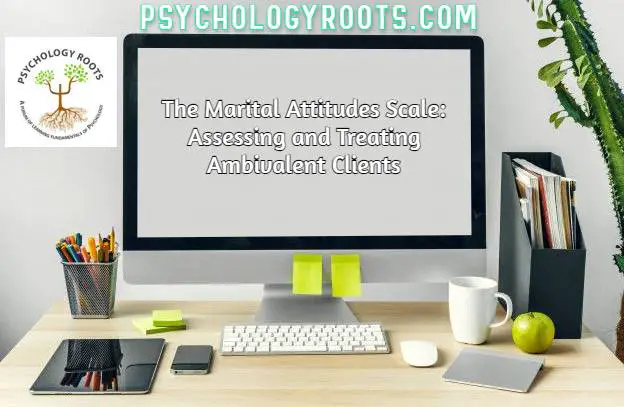Table of Contents
The Marital Attitudes Scale: Assessing and Treating Ambivalent Clients
Here in this post, we are sharing the article on “The Marital Attitudes Scale: Assessing and Treating Ambivalent Clients”. You can read the abstract of the article with a download link. We have thousands of articles in our collection (See articles). You can demand us any article related to psychology through our community, and we will provide you within a short time. Keep visiting Psychology Roots.
About The Marital Attitudes Scale: Assessing and Treating Ambivalent Clients
This article explores the complexities of the couple relationship commonly observed in the clinical settings of couple therapists. Whether described as the “push–pull” of the couple dyad, the mixed agenda couple, the couple that is leaning out versus leaning in, or the ambivalent couple, the literature suggests that this dynamic is to be assessed and explored before fully engaging in relational therapy or pursuing separation or divorce.

The Marital Attitudes Scale: Assessing and Treating Ambivalent Clients
The Marital Attitudes Scale is a 48-item self-report inventory that was normed with a clinical and non-clinical population at 2 clinical training sites. The inventory adheres to a cognitive-behavioral theoretical orientation with 4 subscales and a total score that measure cognitions, emotions, behaviors, schemas, and total scores relative to the ambivalence or the absence of commitment in the couple relationship. The instrument uses the frame of preambivalent, or committed to the relationship; ambivalent, ambivalently committed to the relationship; or postambivalent, no longer committed to the couple relationship.
The inventory has evidenced good validity and reliability and is considered to be a useful inventory for assessing the degree of commitment to the relationship when a couple engages in therapy. This article explores the development of the inventory, its cognitive-behavioral theoretical orientation, the literature around the theme of marital dissolution, the concept of relational ambivalence, and the interface between assessment and therapeutic engagement.
Authors of the Article
- Waymon R. Hinson
- Stephanie J. Hargrave
- Jason Northrup
- J. Michelle Robertson
Avail Article [sociallocker id=64051]
[/sociallocker]
Need Any Other Article:
Are you looking for any other article? Don’t Worry, We provide you free and quickly. Just need to create a query in our community.
Information:
The purpose of our website is only to help students to assist them in finding the best suitable instrument for their research especially in Pakistan where students waste a lot of time in search of the instruments. It is totally free of cost and only for creating awareness and assisting students and researchers for good researches. Moreover, it is necessary for you to take the permission of scales from their representative authors before use because copyrights are reserved by the respected authors.
Help Us Improve This Article
Did you find an inaccuracy? We work hard to provide accurate and scientifically reliable information. If you have found an error of any kind, please let us know.
Add comment. we appropriate your effort.
If you have any scale or any material related to psychology kindly share it with us at psychologyroots@gmail.com. We help others on behalf of you.
Follow